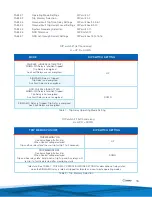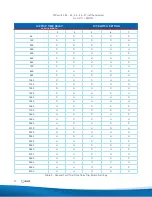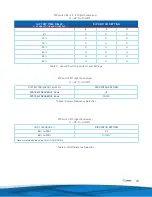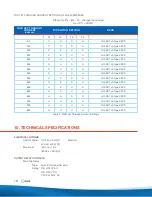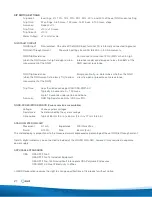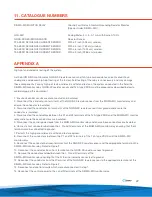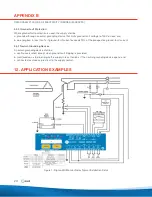
9
Zone grading (or relay interlocking) is supported on the SIGMA-MD monitor relay. If voltage free, normally open (NO)
contacts connected to the ZONE I/L input terminals are closed, the relay’s ground fault trip time delay is extended
by 750 msec.
The SIGMA-MD monitor relay has a trip Inhibit input. If voltage free, normally open (NO) contacts connected to the
INHIBIT input terminals are closed, the relay’s ground fault trip and NGR fault trip functions are inhibited.
Operation of the trip inhibit circuit will prevent the SIGMA-MD monitor
relay from tripping on either an NGR fault or a ground fault. Care must
be taken to ensure that the trip inhibit circuit is operated only for a
short time to prevent injury or damage to the system’s transformer or
circuits connected to the system’s transformer secondary.
WARNING
5. TRIP RELAY AND AUXILIARY FAULT RELAYS
The SIGMA-MD monitor relay has four output relays:
• The trip relay can be programmed for shunt (not failsafe) or undervoltage (failsafe) operation. The trip relay
will trip on either an NGR fault or a ground fault.
• The NGR fault auxiliary relay can be used to give local (door/panel) or remote indication of an NGR fault.
• The ground fault auxiliary relay can be used to give local (door/panel) or remote indication of a ground fault.
• The SIGMA-MD health monitor relay can be used to indicate the health status of the relay. If the SIGMA-MD
loses power or if the SIGMA-MD processor fails, this normally closed relay will open. The contacts will close
when the power LED turns on and remain closed as long as the relay is operating correctly.
All relays are electrically held, i.e. when power is off, the relays are always in the de- energized state. The de-
energized state of the relay contacts is shown on the front panel of the SIGMA-MD monitor relay (with the exception
of the SIGMA-MD health monitoring relay). Note that this is irrespective of the trip relay operating mode.
All relays can be in one of two states, idle or tripped. Whether the trip relay is energized or de-energized when in one
of these states depends on the trip relay operating mode.
When the trip relay operating mode of the SIGMA-MD monitor relay is set for the shunt (non-failsafe) mode and no
fault condition is present, the trip relay is Idle or de-energized. If a fault condition is detected and qualified, the trip
relay is tripped or energized.
When the trip relay operating mode of SIGMA-MD monitor relay is set for the undervoltage (failsafe) mode and no
fault condition is present, the trip relay is normally Idle or energized. The trip relay is tripped or de-energized if a fault
condition is detected on the system. The failsafe mode of operation allows the SIGMA-MD monitor-MD relay to be
configured such that the trip relay is de-energized and put into its tripped state when control power is off.
Refer to Table 1, trip relay operating mode setting for description of relay states when SIGMA-MD monitor relay is
idle/not-tripped for the failsafe and non-failsafe operating modes.

















